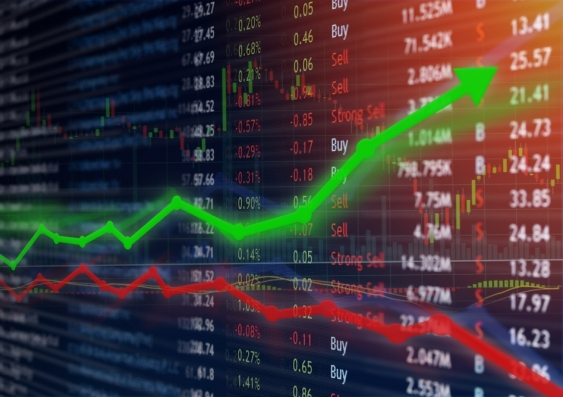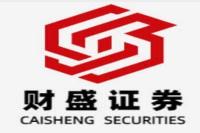Navigating the Market: Key Insights from the Week's Top Financial News
Meta Description: Dive into the week's crucial financial news, including insurance industry advancements, China's economic indicators, and key global market trends. This comprehensive analysis covers macroeconomics, global markets, financial capital, industrial developments, and company-specific news.
Get ready to dive into the week's most impactful financial news! This week, we've seen a whirlwind of events impacting global markets, from the Chinese government's focus on insurance industry development to the continued strong performance of the US stock market. This comprehensive analysis unpacks the week's key developments, offering insights and perspectives to help you navigate the ever-changing financial landscape.
Macroeconomic Pulse: China's Growth Story Continues
China's economy continues to be a focal point for investors worldwide, and this week brought several significant developments. The State Council, China's cabinet, has outlined its vision for the future of the insurance industry, emphasizing the need to develop a robust, resilient sector capable of supporting a growing middle class and bolstering long-term capital investment. This directive signals a commitment to the insurance industry's critical role in driving economic growth and enhancing financial stability.
The manufacturing sector in China, however, showed signs of cooling down. The official manufacturing Purchasing Managers' Index (PMI) dipped to 49.1% in August, indicating a slight contraction in activity. While a worrisome sign, it's important to note that this slowdown is not unexpected, as the global economic landscape remains uncertain.
Global Markets: US Stocks Soar to New Heights
Across the globe, the US stock market continued its upward trajectory, with all three major indices closing higher. The Dow Jones Industrial Average set a new all-time high, while the S&P 500 and Nasdaq Composite also recorded significant gains. This robust performance underscores the continued optimism surrounding the US economy, fueled by strong corporate earnings and low unemployment rates.
However, the picture is not entirely rosy. The technology sector, particularly in the US, has seen some volatility, with the Nasdaq Composite experiencing a slight dip for the week. This suggests that investors remain cautious about the long-term sustainability of tech growth, especially amid concerns about rising interest rates and regulatory scrutiny.
Financial Capital: Central Bank Actions and Investment Trends
The People's Bank of China (PBOC), the country's central bank, injected liquidity into the market by net buying 1000 billion yuan worth of bonds in August. This move aims to maintain ample liquidity and support economic growth.
Meanwhile, the China Securities Regulatory Commission (CSRC) made headlines by applying its Administrative Law Enforcement Party Commitment System to the case of Purple Crystal Storage, enabling investors to recover losses more quickly. This commitment to investor protection is a positive development for the Chinese capital markets.
Industrial Pulse: Focus on Sustainability and Innovation
The week saw a flurry of activity in the industrial sector, with a focus on sustainability, technological innovation, and supporting growth in specific areas. The Ministry of Commerce, along with four other government agencies, launched a program to promote the trade-in of old electric bicycles for new ones. This initiative aims to reduce pollution and promote the adoption of more efficient and environmentally friendly transportation options.
The Ministry of Industry and Information Technology (MIIT) emphasized the pivotal role of artificial intelligence (AI) in driving the next wave of industrialization. The MIIT highlighted the importance of developing both general-purpose and industry-specific AI models, paving the way for a more intelligent and automated manufacturing sector.
Company Spotlight: Strategic Moves and Market Performance
Alibaba completed its three-year restructuring process under the supervision of the State Administration for Market Regulation. This signifies a significant milestone in the company's journey to comply with regulatory requirements and enhance its corporate governance.
Sai Li Shi (Seres), a Chinese electric vehicle manufacturer, reported an impressive surge in sales, with an over 400% year-over-year increase in August. This strong performance highlights the rising demand for electric vehicles in the Chinese market.
Central Huijin Investment, a state-owned investment firm, continued to increase its holdings of leading broad-based exchange-traded funds (ETFs), demonstrating its confidence in the long-term prospects of the Chinese stock market.
Navigating the Financial Landscape: Key Takeaways
The financial world is constantly evolving, and staying informed about the latest developments is crucial for making sound investment decisions. Here are some key takeaways from this week's news:
- The Chinese government is committed to fostering a robust insurance industry, signaling long-term positive prospects for the sector.
- While China's manufacturing sector saw a slight slowdown, the overall economic outlook remains optimistic.
- The US stock market continues to perform strongly, but investors remain cautious about the technology sector.
- The PBOC's liquidity injections aim to support economic growth, while the CSRC's commitment to investor protection builds confidence in the Chinese capital markets.
- The focus on sustainability in the industrial sector is evident in the promotion of electric bicycle trade-ins and the development of AI-powered solutions.
- Companies like Alibaba and Sai Li Shi are making strategic moves to capitalize on market opportunities and drive growth.
FAQs
Q: What are the main factors driving the US stock market's strong performance?
A: The US stock market's robust performance is driven by a combination of factors, including strong corporate earnings, low unemployment rates, and a favorable monetary policy environment. The Federal Reserve's recent pause in interest rate hikes has also boosted investor sentiment.
Q: What are the implications of the Chinese government's focus on the insurance industry?
A: The Chinese government's emphasis on developing a strong insurance industry signals a commitment to long-term financial stability and economic growth. It is likely to attract greater investment into the sector and lead to a more resilient and diversified financial ecosystem.
Q: How is the Chinese manufacturing sector performing?
A: The Chinese manufacturing sector experienced a slight contraction in August, as indicated by the decline in the manufacturing PMI. This slowdown is likely due to a combination of factors, including global economic uncertainty and domestic demand fluctuations.
Q: What is the significance of the Central Huijin Investment's ETF purchases?
A: Central Huijin Investment's significant ETF purchases demonstrate its confidence in the long-term prospects of the Chinese stock market. This can be seen as a vote of confidence for the broader Chinese economy and is likely to further attract investors to the market.
Q: What are the key challenges facing the electric vehicle industry in China?
A: The Chinese electric vehicle industry faces challenges such as intense competition, rising raw material costs, and the need to further develop charging infrastructure. However, the government's support for the industry and growing consumer demand for electric vehicles are expected to drive continued growth.
Conclusion
The financial world continues to be a dynamic and ever-changing landscape. Understanding the key trends and developments is crucial for individuals and businesses alike. Keeping abreast of the news, analyzing the data, and seeking professional guidance can help you make informed decisions and navigate the financial markets with confidence.



